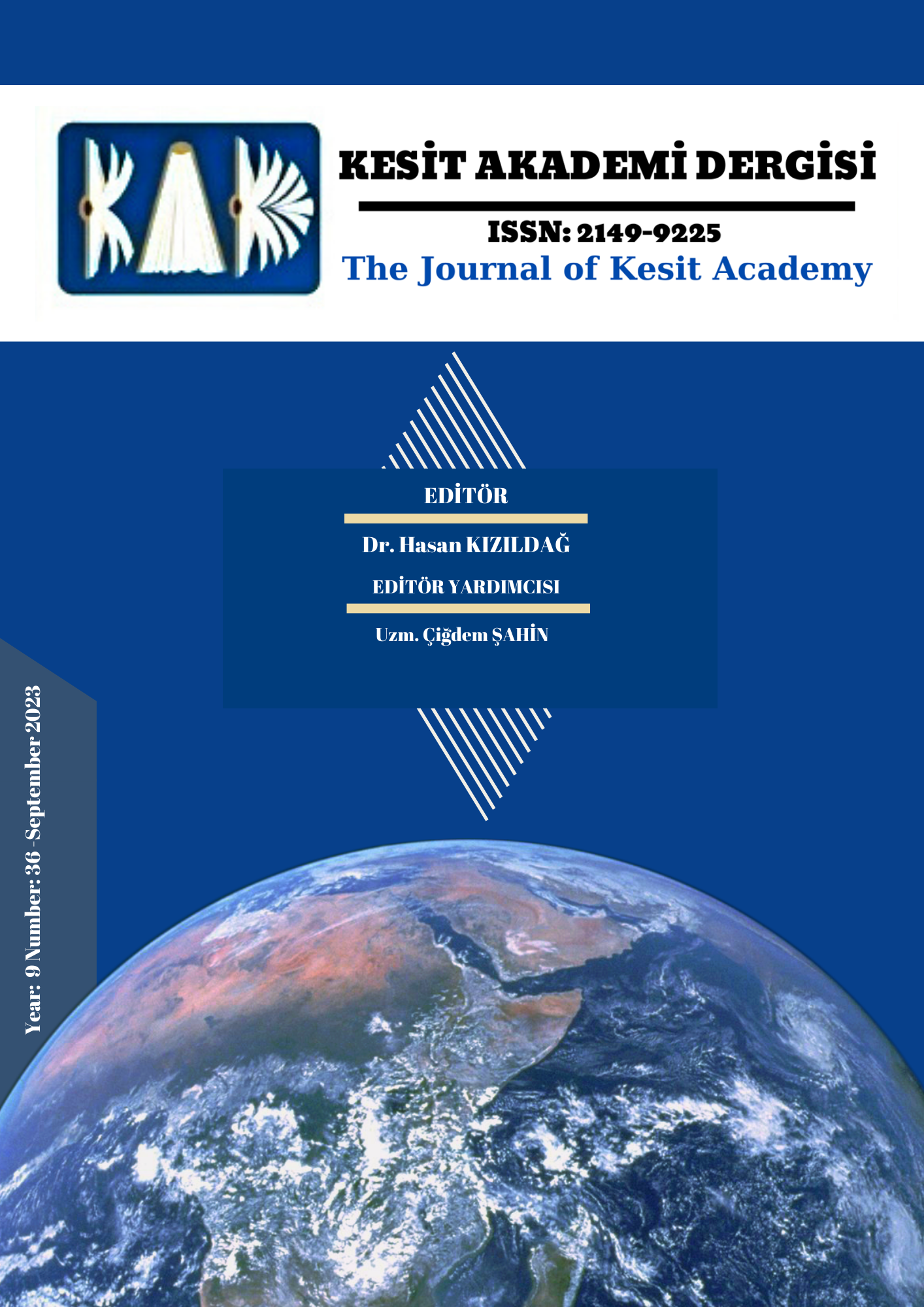Author :
Abstract
Tekstil endüstrisi, hızlı moda ve yüksek üretim hacmi nedeniyle doğal kaynakların hızla tükenmesine, enerji kullanımının artmasına, su kaynaklarının tahribine ve atık miktarının çoğalmasına yol açmaktadır. Bu olumsuz koşullar, moda endüstrisindeki sürdürülebilirlik konusunu ön plana çıkarmaktadır. Küresel moda endüstrisi ve tüketiciler, özellikle hızlı moda konusunda, sürdürülebilirlik açısından olumsuz bir üne sahiptirler. Hızlı moda, düşük maliyetli üretim ve hızlı tüketim odaklı bir strateji benimseyerek çevresel etkileri artırmaktadır. Bu nedenle, tekstil endüstrisi ve uluslararası moda markaları, çevresel etkileri azaltmaya yönelik sürdürülebilirlik trendlerine odaklanarak adımlar atmaktadır. Geri dönüştürülmüş malzemelerin kullanımı, enerji verimliliği ve su tasarrufu gibi konular moda sektöründe önemli bir yer tutmaktadır. Problemlere çözüm sağlamak amacıyla, tekstil endüstrisi sürdürülebilirlik trendlerini benimsemekte ve geri dönüştürülmüş malzemelerin kullanımını artırmaya yönelik stratejiler geliştirmektedir. Tasarım aşamasında alınan kararlar, ürünün çevresel etkisini belirlemede önemli bir rol oynamaktadır. Moda ve tekstil tasarımcıları, malzeme seçimi, ürünün kullanılabilirlik süresi, onarılabilirlik ve geri dönüştürülebilirlik gibi unsurları dikkate alarak daha sürdürülebilir ürünler tasarlamaktadırlar. Bu yaklaşımlar, moda ve tekstil endüstrisinde sürdürülebilirlik yönünde önemli adımlar atılmasına ve çevresel etkilerin azaltılmasına katkı sağlamaktadır. Moda ve tekstil tasarımcılarının sürdürülebilirlik konusundaki etkin rolü, sektördeki tüketicilerin de bilinçlenmesine ve daha sürdürülebilir ürünlere olan talebin artmasına yol açmaktadır. Bu şekilde, endüstri daha çevre dostu ve etik uygulamalara yönelerek gelecekte daha sürdürülebilir olma hedefine ulaşabilir. Sürdürülebilirlik odaklı stratejiler, tekstil endüstrisindeki çevresel sorunları azaltmak ve gelecek nesillere daha yaşanabilir bir dünya bırakmak için önemli bir rol oynamaktadır. Moda ve tekstil tasarımcıları bu alanda liderlik ederek, endüstrinin dönüşümünde kritik bir rol üstlenmektedirler. Bu süreçte tüketicilerin de bilinçlenmesi ve tercihlerini sürdürülebilir ürünlere yönlendirmesi büyük önem taşımaktadır. Sürdürülebilirlik konusundaki bu olumlu adımlar, gelecekte daha dengeli ve çevreye duyarlı bir moda endüstrisinin gelişmesine katkı sağlayacaktır ve böylece hem sektör hem de tüketiciler daha sürdürülebilir bir geleceğe doğru ilerleyebilecektir. Bu makale, moda ve tekstil tasarımcılarının sürdürülebilirlik konusundaki etkin rolünün önemine işaret etmektedir.
Keywords
Abstract
The textile industry, due to fast fashion and high production volume, leads to rapid depletion of natural resources, increased energy consumption, water resource destruction, and an increase in waste generation. These adverse conditions bring the issue of sustainability to the forefront in the fashion industry. The global fashion industry and consumers have gained a negative reputation, particularly concerning fast fashion and sustainability. Fast fashion adopts a low-cost production and rapid consumption-focused strategy, which intensifies its environmental impact. As a result, the textile industry and international fashion brands are now focusing on sustainability trends to reduce their environmental effects. Topics such as the use of recycled materials, energy efficiency, and water conservation hold significant importance in the fashion sector. To address these problems, the textile industry is adopting sustainability trends and developing strategies to increase the use of recycled materials. Decisions made during the design phase play a critical role in determining the environmental impact of a product. Fashion and textile designers are designing more sustainable products by considering factors such as material selection, product durability, repairability, and recyclability. These approaches contribute to significant steps towards sustainability in the fashion and textile industry and help reduce environmental impacts. The effective role of fashion and textile designers in promoting sustainability leads to consumer awareness and an increase in demand for more sustainable products. Consequently, the industry can move towards a more eco-friendly and ethical approach to achieve a sustainable future. Sustainability-focused strategies play a vital role in reducing environmental problems in the textile industry and leaving a more livable world for future generations. Fashion and textile designers take a leading role in this transformation and hold a critical position in the industry's shift towards sustainability. Consumer awareness and preference for sustainable products are of great importance in this process. These positive steps towards sustainability will contribute to the development of a more balanced and environmentally conscious fashion industry in the future, allowing both the industry and consumers to progress towards a more sustainable future. This article emphasizes the significant role of fashion and textile designers in sustainability.





